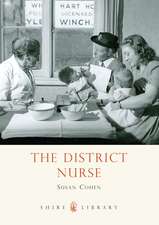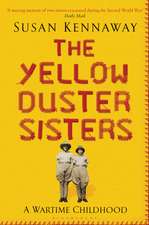Popular Catholicism in 20th-Century Ireland: Locality, Identity and Culture
Autor Síle de Cléiren Limba Engleză Hardback – 4 oct 2017
| Toate formatele și edițiile | Preț | Express |
|---|---|---|
| Paperback (1) | 230.00 lei 6-8 săpt. | |
| Bloomsbury Publishing – 17 apr 2019 | 230.00 lei 6-8 săpt. | |
| Hardback (1) | 711.62 lei 6-8 săpt. | |
| Bloomsbury Publishing – 4 oct 2017 | 711.62 lei 6-8 săpt. |
Preț: 711.62 lei
Preț vechi: 1028.34 lei
-31% Nou
Puncte Express: 1067
Preț estimativ în valută:
136.19€ • 143.26$ • 113.63£
136.19€ • 143.26$ • 113.63£
Carte tipărită la comandă
Livrare economică 09-23 ianuarie 25
Preluare comenzi: 021 569.72.76
Specificații
ISBN-13: 9781350020597
ISBN-10: 1350020591
Pagini: 264
Ilustrații: 14 b/w illustrations
Dimensiuni: 156 x 234 mm
Greutate: 0.54 kg
Editura: Bloomsbury Publishing
Colecția Bloomsbury Academic
Locul publicării:London, United Kingdom
ISBN-10: 1350020591
Pagini: 264
Ilustrații: 14 b/w illustrations
Dimensiuni: 156 x 234 mm
Greutate: 0.54 kg
Editura: Bloomsbury Publishing
Colecția Bloomsbury Academic
Locul publicării:London, United Kingdom
Caracteristici
Shows how Catholicism was a major cultural factor in the shaping of 20th-century Ireland by examining everyday life in Limerick
Notă biografică
Síle de Cléir is a Lecturer in the School of Culture and Communication, University of Limerick, Ireland.
Cuprins
List of IllustrationsList of MapsAcknowledgementsNotes on the TextPreface1. Historical Background2. Approaches and Perspectives3. Ritual and City Life4. Senses of Place5. Ritual Families: Praying and Fasting Together6. Devotion and Belief7. Creativity: Senses and Speech8. ConclusionSources and BibliographyNotesIndex
Recenzii
In this highly original and compelling book, Síle de Cléir investigates the dynamism and creativity of the everyday world of Catholics in Limerick and makes a major contribution to Irish social and religious history.
Popular Catholicism in 20th-Century Ireland employs a rich and lively source base to explore fascinating questions about the role of religion in forming identities and sustaining communities in an urban setting. This micro-history of Limerick offers a suggestive framework for other studies of the spatial, sensual and material beliefs of Irish Catholics in the decades before the Second Vatican Council.
De Cléir's research is meticulous and her arguments are well presented. While her work is grounded in a strong theoretical framework, the author makes extensive use of oral testimony and this book remains accessible and engaging throughout.
Popular Catholicism in 20th-Century Ireland employs a rich and lively source base to explore fascinating questions about the role of religion in forming identities and sustaining communities in an urban setting. This micro-history of Limerick offers a suggestive framework for other studies of the spatial, sensual and material beliefs of Irish Catholics in the decades before the Second Vatican Council.
De Cléir's research is meticulous and her arguments are well presented. While her work is grounded in a strong theoretical framework, the author makes extensive use of oral testimony and this book remains accessible and engaging throughout.











